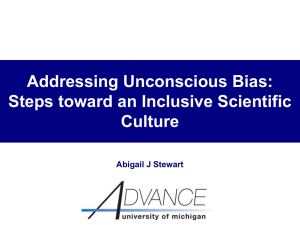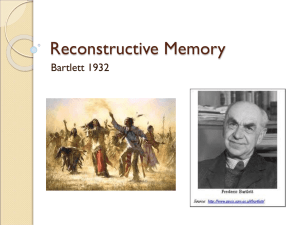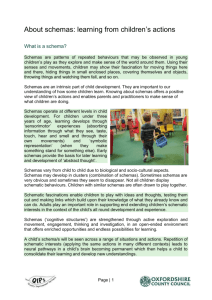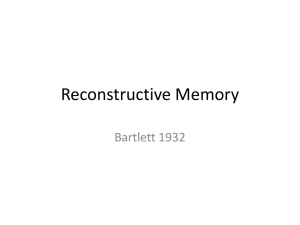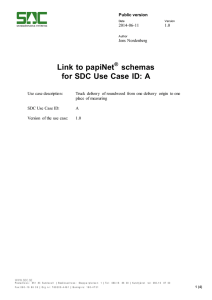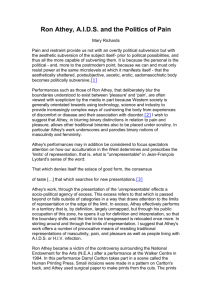Schematic Play
advertisement
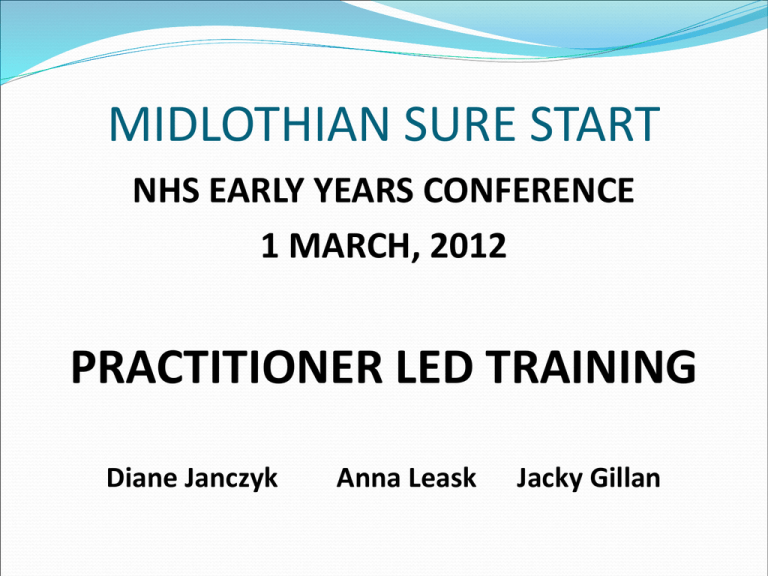
MIDLOTHIAN SURE START NHS EARLY YEARS CONFERENCE 1 MARCH, 2012 PRACTITIONER LED TRAINING Diane Janczyk Anna Leask Jacky Gillan PRACTITIONER LED TRAINING The Training – Staff Capacity Building Relevant theory and research and what this looks like in practice Developing reflective practice Quality Improvement visits PRACTITIONER LED TRAINING POLICY LINK TO PRINCIPLES OF GIRFEC AND EARLY YEARS FRAMEWORK Developing a highly skilled workforce Identifying and supporting key Early Years Practitioners to act as mentors/leaders Evidence base that supports the link between qualifications of staff and better outcomes for children A Personal note.... I consider myself to be a continual learner. I feel reflection is such a large part of my continual improvement as a Practitioner. As I am sure we all do! “Initial training is important but continuous training and professional development are crucial” (Daly, Byers and Taylor, 2004, p.57) This is an area within my career that I feel strongly about; I feel should never become content with my skills and abilities. I want to continue to grow and learn as an individual and share that knowledge with those around me. Where it began..... . Midlothian Birth to Three Training Schematic Play was mentioned as a potential interest to Diane Today! Diane Researched Schematic Play and Resourced Materials; Again Again! Book Diane and Anna asked to hold a training event for Midlothian Pre Birth to Three Practitioners. Diane and Anna shared this information on their children’s learning with parents. Diane and Anna worked together to implement this into their practice. Diane shared this new found knowledge with work colleagues, Anna and Yvonne. Sharing good Practice Throughout this wonderful journey, we have continued to grow as practitioners. This knew knowledge has most importantly allowed us to improve our practice and enrich the learning experiences for the children in our care. However it has also allowed us to develop our individual, leadership and training skills. As practitioners we have realised that ‘leadership comes from all levels.’ Individuals can make a difference if given the opportunity and support to grow. Sharing our knowledge as practitioners is the way forward to High Quality Childcare and Education. It is vital that as a professionals we communicate and share good practice. “Networking with colleagues from related professions gives access to a greater range of knowledge and skill…” (Rodd, 2006, p.237) “A cluster of pieces which fit together” (Bruce, 1997, CH5) Presented by Anna Leask and Diane Janczyk Midlothian Sure Start Schemas – What does it mean? Schemas are patterns of repeatable behaviour that children demonstrate when they are exploring the world and trying to find how things work. “ It is best to think of Schemas as being a cluster of pieces, which fit together” (Bruce 1997, ch5) Where did it start.... Schemas were first identified by Piaget a childhood theorist, he was one of the first to recognise organised behaviour patterns in young children. His work has been further developed by the work of Chris Athey, during her 5 year research project which began in 1972. Piaget was the first to identify schemas and Chris Athey was the first to lead the way in observing schemas in a nursery setting . Ask yourself...... Have you ever given a child a present and noticed she/he is more interested in the box, rather than the toy? Have you ever noticed a child paint or draw a lovely picture, then cover it completely in scribble or paint? Parents & Practitioners are often puzzled by some of their children’s actions. Schemas can provide the explanation!! Can anyone relate to this? Can anyone share an example with the group? What is the importance of recognising schemas among young children? By identifying a child’s schemas it makes it possible for the practitioner to plan and extend their learning in ways that most interest them. 1. Relationships Remember Relationships are the fundamental starting point for all of children’s learning. Bowlby described attachment as; “a universal human need to form close affectionate bonds with others” (NHS, 2001, p.88) Relationships are a key principle in development of all children and therefore it is vital that we recognise this first. Rich Play will only happen when there are Rich Relationships present. 2. The Environment What we have to think about..... • Spaces – •Resources - Benefits and constraints? Furniture Layout Opportunities for children to talk to one another and interact Quiet and Noisy areas Are their plenty of materials and objects to capture the children’s imaginations? Are there resources that will allow schemas to be developed: for example, baskets and little bags for TRANSPORTING The most important element of the environment is the people in it! Are we as practitioners creating this wonderful little world, enriched with opportunities and encouragement for the little people in our care to explore their interests. Then as knowledgeable practitioners are we then using our knowledge to adapt the environment to allow these interests to be extended and developed further. ‘Enabling environments’ are the key!! As a practitioner......... We have all been guilty at some point of perhaps saying: “ Can we keep the sand in the sand tray please” “No, the food and cups belong in the house corner” “I think it would be a good idea to keep the play dough at the table please.” All of these different patterns of behaviour can sometimes be seen as frustrating or even annoying by some practitioners. I myself have been one of those practitioners. However once we see the link between these patterns of behaviour and child schemas, it is not only fascinating but very exciting!! An example of a schema in action...... Three-year-old Max was into transporting. He cruised the nursery, riding a bumper truck. First he filled the scoop with books. Practitioners vetoed that idea and helped him to put the books back on the shelves. Next he raided the home corner and filled the scoop with dolls, blankets and dishes. Well-meaning staff persuaded him that other children were using those things, so off he scooted again. Blocks, farm animals and crayons all got the same response from the adults. Later in the morning, Max was observed driving as close to the walls as he could and carefully picking up tiny pieces of dust and fluff that he discovered along the edge of the skirting board. AT LAST he had found something to transport! Children motivated by a particular schema will go to great lengths to explore the interest that is driving them. I Featherstone, 2008, p.22 I’m sure we can all relate to this. Be honest now!!!! Five Main Schemas Rotation Enveloping Connecting Transporting Trajectory Rotation Explores things that turn. Interested in wheels or cogs. Circular movements. Enveloping Covering themselves or other items. Hides under blankets, wrap things up paints over pictures. Connecting Interested in how things join together. Tie knots, take things apart. Transporting Moving objects from one area to another. Carrying items to a special person. Loading a buggy with lots of items. Trajectory Interested in either up and down or side to side. Paints in lines, climbs upwards on climbing frames, throws things. Now we know more...... We can see where children’s patterns of behaviour link into different schemas. As practitioners it is important that we encourage young children as they explore particular patterns of thought or movement. This allows each child to process their thinking and make sense of the world around them. This concept coincides with Jean Piaget’s and Freidrich Froebel’s thinking that; “Practical experiences were needed in order that understanding could occur” Something to think about...... When observing young children in an early childhood centre that is using a childcentred curriculum, adults often think they are like butterflies, flitting from area to area, from child to child. That may be true some of the time. However, when integrated learning is taking place, another metaphor might be more appropriate; that of bees which gather nectar to integrate into something of significance. Children focus their attention by fitting new experiences into patterns they have already stored in their memories . They develop schemas by behaving like honey bees, moving from experience to experience to gather further ingredients to encode; in that way they build a fuller understanding of that schema. In other words children get hooked on certain patterns of behaviour because they are trying to make sense of the abstract characteristics of particular features of their environment. Anne Meade, Thinking Children Group Work Now we have a few small clips of video footage from Hand in Hand. (Group Worksheet) Further Reading..... Again, Again!: Understanding Schemas in Young Children by Sally Featherstone, Clare Beswick, Stella Louis Extending Thought in Young Children: A Parent Teacher Partnership by Ms Chris Athey Threads of Thinking: Young Children Learning and The Role of Education by Cathy Nutbrown Understanding Schemas and Emotion in Early Childhood by Dr Cath Arnold Like Bees, Not Butterflies: Child Initiated Learning in the Early Years by Sally Featherstone Useful website: http://www.birchfarm.co.uk/schemas.htm

